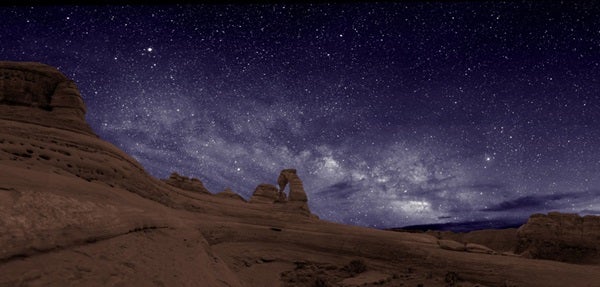The Park Service endeavors to preserve our country’s scenic beauty — including the night sky. Established in 1999, the Night Sky Team has developed a technique to quantify light pollution. The rangers use either a Santa Barbara Instruments Group (SBIG) or Finger Lakes Instrumentation (FLI) CCD camera and a Nikon 50mm lens with an attached Bessel-V filter on a Celestron NexStar go-to mount to photograph the sky. Using a custom script, they record 45 frames, covering the sky in 20 minutes. The end product yields 30 million pixels of precise sky brightness.
| Pack up your telescope, and check out the top 5 dark-sky sites among the parks, monuments, seashores, and historic sites the Night Sky Team has measured. |
| 1. Natural Bridges National Monument, Utah |
| 2. Capital Reef National Park, Utah |
| 3. Great Basin National Park, Nevada |
| 4. Big Bend National Park, Texas |
| 5. Bryce Canyon National Park, Utah |
Custom software later filters out the stars and provides data about the site’s sky, namely, the magnitude per square arcsecond between the stars. Despite the remoteness of many parks, the team has discovered only one truly dark-sky park among the 45 surveyed: Natural Bridges National Monument in Utah. This park has retrofitted all the lights within its boundaries to help maintain that status. This is a relatively small task when compared to battling a nearby city’s light dome.
Light pollution is insidious. Far from being contained over a city, “Light domes can brighten the sky uniformly,” Chad Moore, Night Sky Team program manager, tells Astronomy. “We’ve recorded light pollution from 200 miles away.”
Moore is certain his team will see some dramatic changes in the coming years — but not all for the worse. Parks nationwide are retrofitting their light fixtures to limit light pollution, and some cities, like Flagstaff, Arizona, now have laws about the types of outdoor lighting allowed. The effect is noticeable, but the movement is not widespread.
“Our amateur astronomy community needs to think about this problem strategically,” says Moore, an avid observer. “I hope people will realize the National Park Service is starting to accomplish some things, and we could use some more allies.”
For more on the Night Sky Team, check out James Vlahos’ “Night Rangers” in the June/July 2006 National Geographic Adventure magazine and Ben Harder’s “Light All Night” in the March 18, 2006 Science News. Also, check out the International Dark-Sky Association for information on proper outdoor lighting and how you can get involved.










